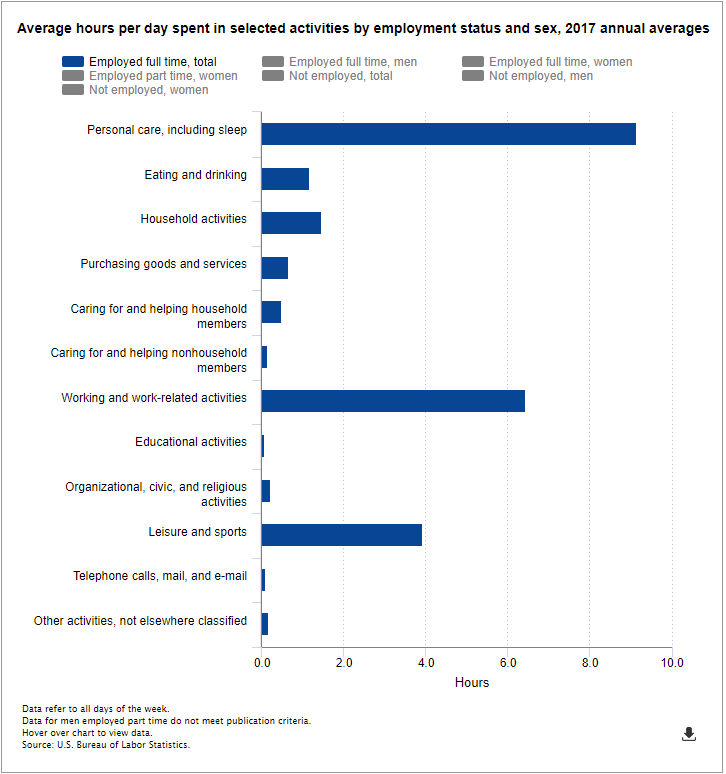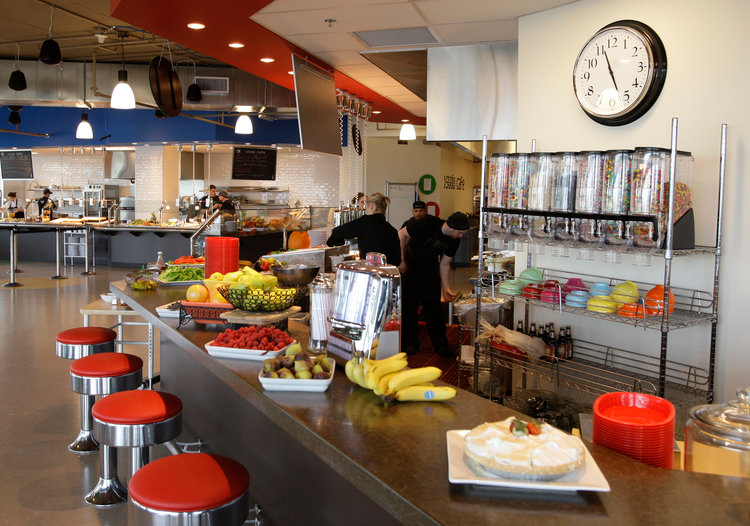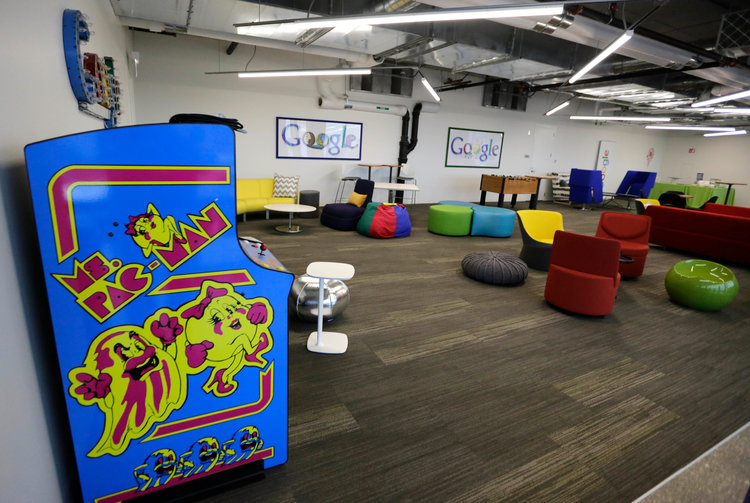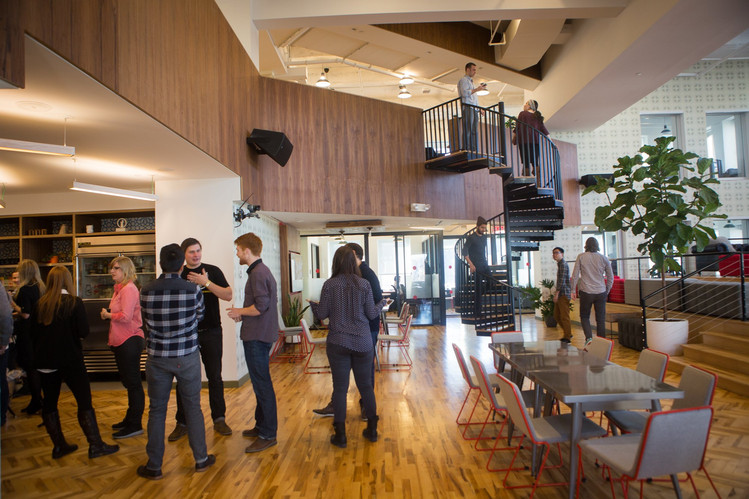According to the Bureau of Labor Statistics, the average American work almost 7 hours a day. That’s not exactly a full 8-hour day — but one hour lunches could account for the missing hour.
Traditionally, most employers expect a 9-to-5 work schedule. It’s the norm.

But you may be surprised that many companies are adopting more flexible work schedules. They are changing the definition of locking down employees in office desks from 9-to-5 every day.
In many instances, 9-to-5 workday has shown to be less effective and reduced productivity. Especially in the digital world we live in today, a 9-to-5 work schedule can hinder progress, creativity, and innovation.
The history of 9-to-5
The Ford Motor Company was the first American business to adopt and implement the 9-to-5 work schedule in the 1900s. Consequently, it became the de facto standard for work schedules ever since.
Before Ford came along, during the Industrial Revolution, 16-hour work days were the norm. Companies focused their efforts to increase productivity. And labor laws didn’t exist to curtail that madness either. Workers were often overworked and underpaid.
Compared to our digital world today, we should be considered blessed.
In recent years, a new mindset is born
A new generation of workers are emerging. One that is walking away from the normal 9-to-5 work schedule. Yes, it’s true that many companies still require its employees to show up and work 8-hour days.
Companies that are conquering the world today — tech and software companies like Uber, Amazon, Google, AirBnB, and others — paint a different picture about work schedules. One that is contrary to traditional companies, that by the way are slowly warming up to more flexible work schedules as new executives join the company.
There are many benefits working for tech behemoths. Among those is a flexible schedule for many of its teams and employees. But this is not a totally new trend.
Heck, even during my short stint at Yahoo! many moons ago, we had the flexible schedules as long as we got our work done. Of course, that changed when Marissa Mayer took over and got rid of remote working. Good times.
It begs the question. Is it more important to clock-in and clock-out (quantity) or producing the highest level of productivity (quality)?
If you ask me, I would opt for the latter without question. Yes, productivity is, should, must be every company’s #1 priority.
Companies like Google are cognizant of it’s employees’ expectations, but more important the company has a human resource and corporate culture team that focuses on motivating its employees, leading to higher productivity — and they have the stock price, revenue, and pizzazz to show for it.
Let’s indulge for a moment.
Here’s the thing with a company like Google and Amazon, it’s hard for anyone to refuse employment offers by them. They offer great benefit packages, work space, and prestige.
Google’s decked out campus will impress any new hire and potential interviewee.
A full-service restaurant (not cafeteria!) with full staff is ready to serve breakfast, lunch, and dinner.

Game rooms that are decked out more lavishly and geekier that rival any arcade.

You get the idea.
But even with all this extravagance, the company still believe in flexibility rather than enforcing strict schedules.
Truth is, showering its employees with full-spread gourmet breakfasts, free steak lunches and made-to-order meals, and the best health care in the world, it’s no longer enough — recent study shows that employees value flexible schedules more than anything else.
In this article, I’ll look at the several reasons why the 9-to-5 workday doesn’t always work and shouldn’t be accepted blindly.
1. Nobody likes to be confined to a desk
Let’s face it. Unless you don’t work in a team, you are going to appreciate your freedom to take micro breaks at work.
In dog-friendly companies, that could mean taking Fido for a 15-minute walk every few hours. Or subsequently, taking a brief walk to clear your mind.
On average, it’s difficult for humans to focus for more than 120 minutes at a time. Our productivity level deteriorates over extended time of intense focus. There are exceptions to the rule, but for most of us, two hours is a long time to to focus on a task.
Let’s not even talk about multitasking.
We’re not machines. Prolonged focus succumb is to distractions. And the quality of work diminishes.
It’s a stretch to say the 9-to-5 workday does not allow for breaks — that’s an unfair statement. I’m sure no reasonable employer or manager will deny a hard working employee a break.
But the point I’m making here, albeit, slightly biased, is that flexible work schedules can foster healthier work environment.
2. The rise of freelancers changes a lot of things
Independent employees and contractors will increase at scale, and it’s not slowing down.
We are presented with unbelievable opportunities in our generation that surpasses anyone’s expectation.
First, social media has opened global connections. Second, almost everyone will own a smartphone. Third, mobile commerce is growing exponentially. Last but not least, workers can work from practically anywhere in the world — taking on freelance, contract, and on-demand projects.
While remote work is a desirable option, employers are also benefactors of this arrangement.
For companies that are embracing remote workers, there are a number of benefits employers as well – such as cutting costs and maintaining higher levels of happiness and productivity.
After all, happiness is among the top reasons why some of the best employees leave their jobs.
3. Technology and innovation is moving at a dynamic pace
The 9-to-5 weekday leaves little room for creativity and innovation — in the sense of free time for new ideas.
When was the last time your company allowed you hours to come up with fresh ideas that are unrelated to the tasks on hand?
Most companies claim to encourage innovation — but what they really mean is for employees to make improvements on the existing projects. That’s far from innovating if you ask me.
Many project teams have a tendency to spend a lot of time on the same problems that do not contribute to any meaningful success. These are vanity projects. And companies are infested with such projects.
How does this happen? Glad you asked.
Someone in power, in all their wisdom, decided what’s best for the business. But there lies their biggest mistake. Hubris. Instead of focusing on what the customers want, they assume what the customers need. Consequently, employers get stuck in a vicious cycle of unending meaningless projects.
That’s what happens when workers operate in a vacuum.
Imagine a culture that empowers and enable workers to create and explore new solutions to new problems. That’s exciting.
Most 9-to-5 work schedule is inundated with immediate tasks and meetings. That leaves little to no time for creative opportunities.
4. Productivity maximization
Let me ask you a question. Would you rather have a worker put in 8 hours a day, 5 days a week, and still not complete a project. Or, empower your worker to their own schedule as long as they complete the project before or by the due date?
I thought so. Of course you would choose the latter.
Without sounding to crass, why do give a shit how many hours your employee spends working on the project? Are you that insecure and distrusting of your employee that you are measuring their work by the number of hours they put in?
Or, are you the type of leader who trusts your employee is capable and competent to complete their project on time? And accountable enough to inform you if there’s a delay.
Productivity is a measure of how efficiently projects can be completed and with precision.
Employees that are motivated by the right triggers will excel and be committed to the success of their employers.
I’ve worked at various companies before launching my ad agency, and it was clear that 9-to-5 work schedules was filled with endless meetings to meet about the meetings. Cliche, but true.
A typical 9-to-5 work schedule might get the job done, but the jury is still out of the level of productivity.
5. Co-working space promotes collaboration
Heard of WeWork?
For the benefit of those who are not familiar, WeWork offers shared workspaces for startups, entrepreneurs, freelancers, startups, small businesses and large enterprises.

Collaborative workspaces is growing in popularity across the country and around the world. It’s affordable and comes with all the amenities of an office, without requiring a long-term lease contract.
With the convenience of workspaces, workers no longer have to meet at coffee shops or random cafes — avoiding the noise and distraction while trying to get things done.
Co-working workspaces are popular for companies of all sizes. In addition to the open workspace layout, it also allows you to meet professionals from other companies — and maybe even a new client!

These co-working spaces is here to stay. More companies and freelancers will be using them soon as the 9-to-5 workday continues to fall out of favor.
People who work in a collaborative space are known to feel more productive and have a more positive experience. Additionally, the decor of co-working spaces are designed with your experience in mind. Would you rather get stuck at your local coffee shop or work in an open space with a professional set up? I think the choice is obvious.
Even though you are just renting space, you will feel like you are in your office.
This is very practical for entrepreneurs or solopreneurs who may only need an office space for a few hours per day/week/month.
For large corporations, these co-working workspaces allow teams to meet in a professional environment without the need of a owning a physical building. It’s a win-win.
6. Generational expectations gravitating towards a remote lifestyle
Everyone who works on the Fullmoon team is remote. We have no offices.
We have employees around the country — from Chicago, Utah, and Florida to name a few.
People are getting increasingly dissatisfied with the need to “stay in the office” for the sake of it. The traditional workspace is changing right before our eyes. And companies that want to attract the top talent will need to jump on this bandwagon or risk losing out on the cream of the crop.
This is most evident in the tech space — where companies like Google and Amazon are aggressively hiring and paying top dollar for the best.
15 years ago, employers hold the upper hand when it comes to hiring. Accepting a job may require employees to relocate. Today, the tables are turning thanks to technology and co-working spaces. Think about it. Employees know that companies that want to hire them will pull out all the stops — even if that means renting a co-working workspace.
It’s an interesting shift in the hiring paradigm. But what about face-to-face meetings and team collaboration? That would be an obstacle decades ago. But today, with start-of-the-art communication software like Slack, Zoom, UberConference, Skype, and GoToMeeting — this is no longer a blocker.
Wrapping it up
The 9-to-5 schedule simply isn’t for everyone, and in today’s digital world, many workers are becoming increasingly dissatisfied with traditional corporate environments.
In all fairness, there are more people who prefer a predictable 9-to-5 schedule. It’s the American dream. A full-time job, with a steady paycheck, and no surprises.
But for those who seek more flexibility, the 9-to-5 is polar opposite.
They are seeking new, innovative ways to be more productive at work while still maintaining flexibility.
As the number of freelance and on-demand work grow, the rigid 8-hour work days could soon be the exception not the norm.
More and more forward-thinking companies are turning to shared office spaces and freelance employees to battle the changing sentiment about work schedule flexibility.
Would you choose co-working workspace over a 9-to-5 schedule?



